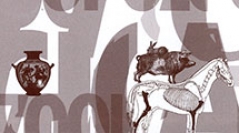

 Anthropozoologica
42 (2) - Pages 129-142
Anthropozoologica
42 (2) - Pages 129-142Several authors have pointed out that the development of a specialized economy is in concordance with a state policy that favours the increase of control over the production, distribution and consumption of resources and goods. In agreement with these ideas a series of coordinated strategies has been proposed for the Inca occupation of north-west Argentina (NOA), including the intensification of the pastoral system. In this paper I will explore how local variations deviated from the general model originally proposed. This is essential for understanding the diversity of animal products - wild and domesticated - produced locally in comparison to other close or more distant areas, their circulation and use in different contexts. Based on the information coming from several sites located in the Quebrada de Humahuaca (Jujuy province) and the Yocavil valley (Salta province) we test the aforementioned model by using some zooarchaeological markers, basically size variation and stable isotopes in camelids.
Animal products, camelids, archaeozoology, Inca times, north-west Argentina.